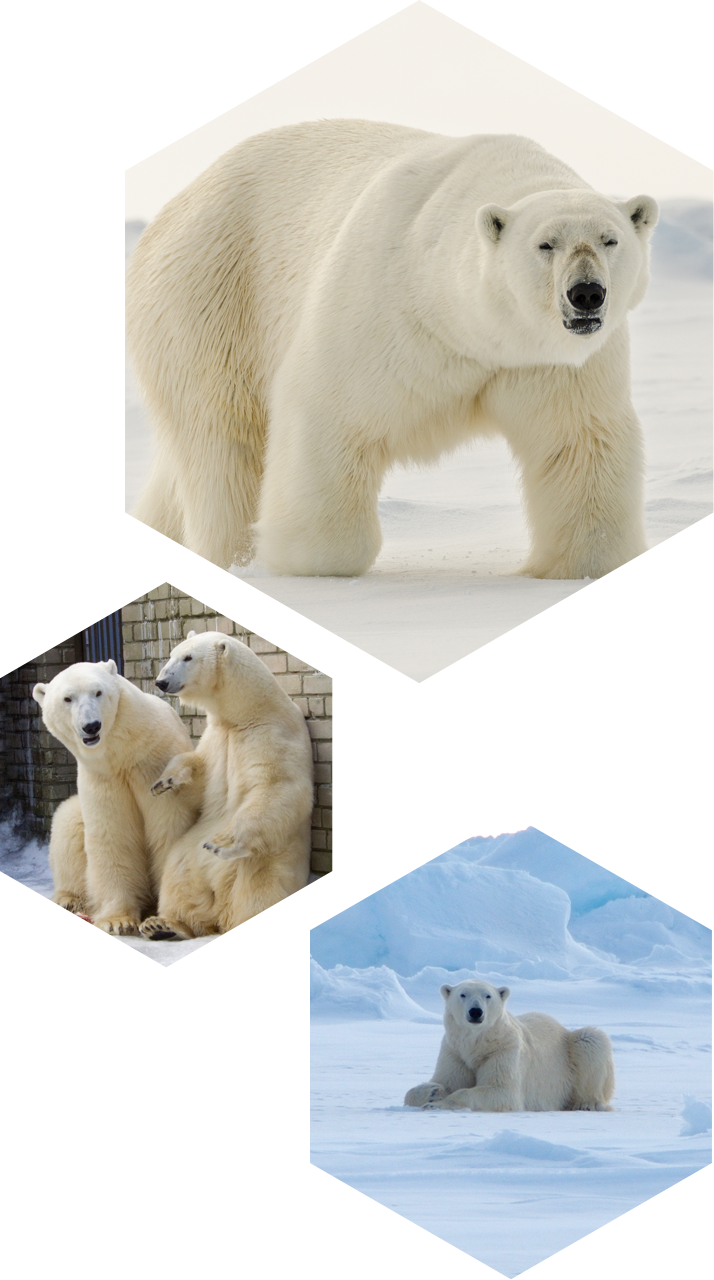About Polar Bears
Class Mammalia
Order Carnivora
Family Ursidae
The polar bear is the world’s largest terrestrial predator, the youngest and most carnivorous member of the bear family. It spends much of its time roaming across the ice fields, hunting its prey near the edge of the ice where they are most abundant. Regardless of its great bulk, the polar bear can be quick and deft, a good swimmer and diver. A typical Arctic dweller, it is protected against cold by thick fur and a fat layer under the skin.
Indigenous Arctic ethnic groups lived side by side with polar bears for thousands of years. They were part of their habitat and treated the bears with respect. The development of modern science and technology brought about a belief that man is superior to all other living beings on earth. Human actions have eradicated entire species, destroyed habitats, depleted resources and polluted the earth, posing an imminent danger to the existence of many species, including humanity itself.

During the latest decades we have started to realise that all living beings on earth have the right to life and are dependent upon one another, the polar bear among them. Being the top predator of the Arctic food chain, the polar bear is the keysone species of the ecosystem. The decline of the polar bear would affect the current Arctic ecosystem and the contient as a whole. Owing to locally adapted Arctic species, the ecosystem is especially vulnerable. If the polar bear disappears, the seal populations will grow and numbers of fish and crustaceans will plummet. That in its turn will make an impact on birds, whales, and people. So, the status of the polar bear indicates the status of the environment.
On the IUCN Red List the polar bear is classified as Vulnerable.
